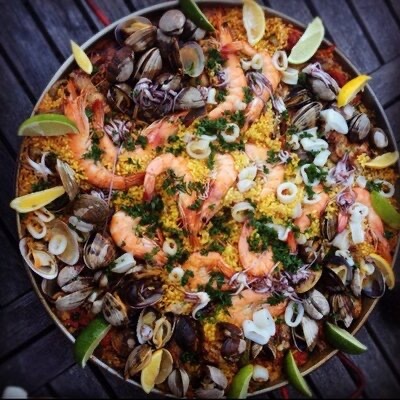Takasago Sake Brewing Co. Ltd.
Takeda Sake Brewing Co. Ltd.
Katafune Daiginjo Junmai Ginjo Sake
Yonezawa Sake Brewery
Imanishiki Junmai Daiginjo
Imanishiki Junmai Daiginjo - this is sweet for me. It’s got more power on the palate for sure. The finish fades pretty quick. The aromatics are light.
Ingredients: Rice, rice koji
Raw rice: 100% Miyamanishiki rice from Nagano Prefecture
Rice polishing ratio: 39%
Alcohol content: 16%
Manufacturer: Yonezawa Sake Brewery Co., Ltd.
4182-1 Okusa, Nakagawa Village, Kamiina District, Nagano Prefecture
Manufacture date - 2025.01A — a month ago
Kameyowai Shuzo Co., Ltd.
HachiJitsu Burning whiskeys
Sake World 2024 Had to judge given it’s the same glass throughout the tasting but this was tasty. — a year ago
Yucho Shuzo Co., Ltd.
Kaze No Mori Tsuyuhakaze Junmai Sake
This was all part of our Sake Day 2025 experience. We only tasted 60ish sakes out of an estimated 450, so a small fraction of what was available. While I attempted to rinse the glass with water and stay hydrated it’s difficult to fairly rate in this environment and I use it solely as a time to try a wide variety and interact with the brands. — a month ago
Hakuro Sake Brewery Co., Ltd
Hakuro Ajyu Junmai Ginjo
Hakuro Shuzo (白露酒造) in Yamagata - Hakuro Ajyu
• Type / Grade: Junmai Ginjo (純米吟醸)
• Rice & Polish: Yamagata-grown Dewasansan (出羽燦々) 100%, polished to about 55%
This was all part of our Sake Day 2025 experience. We only tasted 60ish sakes out of an estimated 450, so a small fraction of what was available. While I attempted to rinse the glass with water and stay hydrated it’s difficult to fairly rate in this environment and I use it solely as a time to try a wide variety and interact with the brands. This is top quartile. I would search this out. — a month ago
Kyoto Whisky
KURO-OBI (Nishijin-ori)
Light. Guessed 40% ABV so reads lighter than it is. Finish gets better with air and will try it again in a bit to see if the air helps. > Kyoto Miyako Distillery
- To the Kyoto of the world -
Kyoto Miyakomushi is Kyoto's first whiskey distillery.
Located in Kyotanba Town, a town rich in nature and home to high-quality water, we are painstakingly producing delicious whiskey that resonates with people all over the world.
The gorgeous and luxurious fabric has been specially processed to create this product. Please enjoy the harmony of Kyoto whiskey and traditional Japanese craftsmanship.
Nishijin Textile Association Number NO.2419
:whiskey
Ingredients: Malt and grain (domestically produced)
Contents: 200ml
Alcohol content: 46%
Kyoto Sake Brewery Co., Ltd.
Funai District, Kyoto Prefecture
11 Sakahara Minamibayashi, Kyotanba-cho
0771(84)0110
— 2 months ago
Yucho Shuzo Co., Ltd.
Takacho The Regal Hawk Bodaimoto Junmai Sake
Great body and very juicy acidity for sake. — a year ago
Hakuro Sake Brewery Co., Ltd
Hakuro Suishu Junmai Ginjo
Hakuro Shuzo (白露酒造) in Yamagata - Hakuro Suishu
• Type / Grade: Also Junmai Ginjo (純米吟醸)
• Rice & Polish: Same general Dewasansan/Yamagata spec but brewed to be lighter and more aromatic.
• Style markers: 生酒 (nama) = unpasteurized, but not labeled genshu; intended to be slightly more delicate and lower in alcohol than Ajyu.
This was all part of our Sake Day 2025 experience. We only tasted 60ish sakes out of an estimated 450, so a small fraction of what was available. While I attempted to rinse the glass with water and stay hydrated it’s difficult to fairly rate in this environment and I use it solely as a time to try a wide variety and interact with the brands. This is top quartile. I would search this out. — a month ago
Yucho Shuzo Co., Ltd.
Kaze No Mori Tsuyuhakaze 507
Kaze no Mori Tsuyuhakaze 507 (風の森 露葉風 507), a seasonal sake from Yucho Shuzo in Nara Prefecture.
Key points:
• Brand / Series: Kaze no Mori (“Wind of the Forest”) is known for ultra-fresh, lightly sparkling sake bottled immediately after pressing.
• Rice: Tsuyuhakaze (露葉風) is a Nara-only heirloom sake rice.
• Polish ratio: The number 507 means a 50 % polishing ratio with yeast No. 7.
• Style: Typically Junmai Daiginjo-grade in polish, but brewed in their unpasteurized, naturally effervescent house style.
This was all part of our Sake Day 2025 experience. We only tasted 60ish sakes out of an estimated 450, so a small fraction of what was available. While I attempted to rinse the glass with water and stay hydrated it’s difficult to fairly rate in this environment and I use it solely as a time to try a wide variety and interact with the brands. — a month ago



Norman
Katafune “Tobin” Daiginjo
• Brewery: Takeda Sake Brewing Co., Ltd. (Joetsu City, Niigata, Japan)
• Classification: Daiginjo (the highest polishing class under Junmai/Daiginjo styles)
• Rice Polishing Ratio: 45% (meaning 55% of each grain was milled away)
• Alcohol: 16–17%
• SMV (Sake Meter Value): +2.0 (mildly dry)
• Acidity: 1.3 (on the low side for sake)
The term “Tobin” refers to tobin-kakoi, a premium bottling method. After fermentation, the sake is bag-pressed and allowed to drip under gravity into 18-liter glass bottles called tobin. Only the free-run “nakadori” fraction—considered the cleanest and most balanced—goes into the final blend. This was all part of our Sake Day 2025 experience. We only tasted 60ish sakes out of an estimated 450, so a small fraction of what was available. While I attempted to rinse the glass with water and stay hydrated it’s difficult to fairly rate in this environment and I use it solely as a time to try a wide variety and interact with the brands. This was one of the best and I’m saying that with it being at the end of the night so the bar went up. Very nice. — a month ago